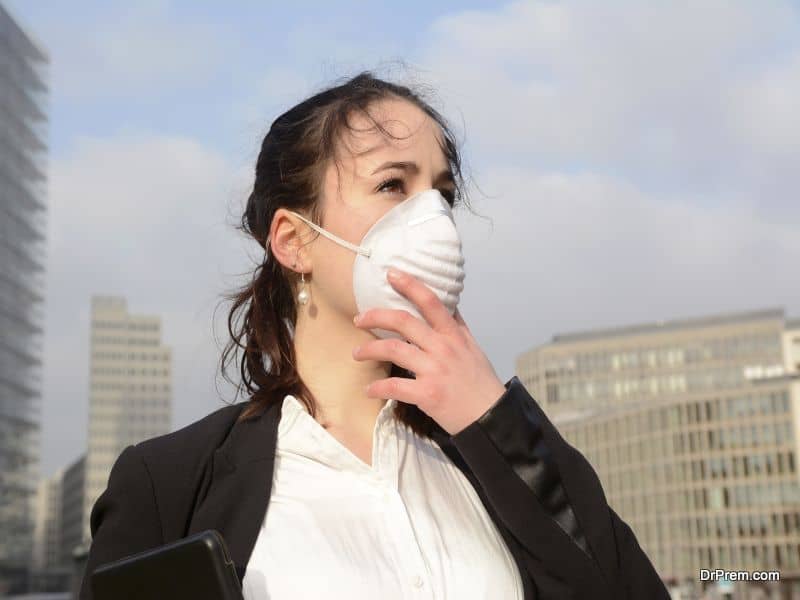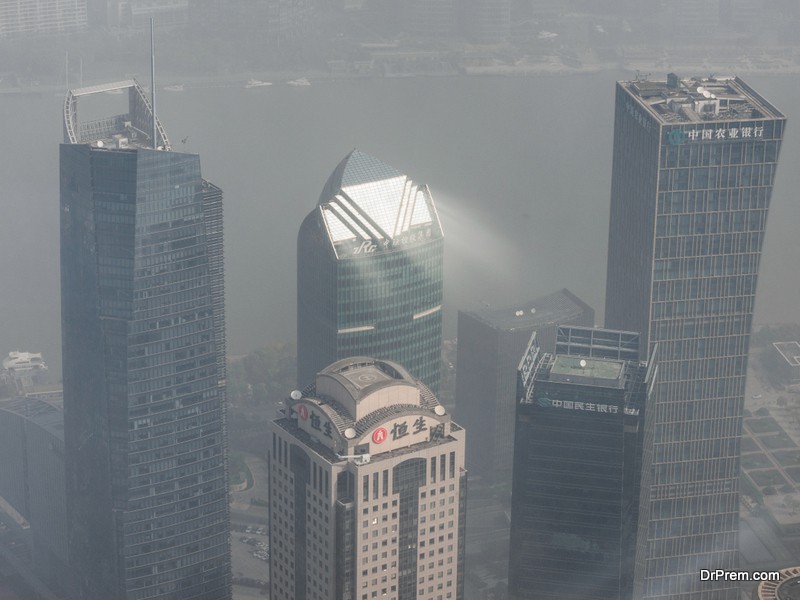India is now home to some of the most polluted cities in the world. A better economy has led to more buying power which means there are tons of cars on the roads causing massive greenhouse emissions. Major cities in India are in the grip of smog, and PM2.5 levels are dangerously high. Industries have made the economy stronger but the air dirtier.
China, which used to have the number spot on the pollution list has implemented several measures against pollution and brought down pollution levels. India can learn from China air pollution solutions to solve the country’s increasing pollution problem.
China air pollution solutions which India can follow
 We have seen photos of thick smog hanging over the cities of China, with people wearing masks to be safe from the PM2.5 in the air, and Chinese cities became famous for being the most polluted cities in the world. The Chinese government worked out a multi-pronged strategy to reduce pollution, addressing many sectors, due to public outcry.
We have seen photos of thick smog hanging over the cities of China, with people wearing masks to be safe from the PM2.5 in the air, and Chinese cities became famous for being the most polluted cities in the world. The Chinese government worked out a multi-pronged strategy to reduce pollution, addressing many sectors, due to public outcry.
China’s industrial and economic development lifted millions of Chinese people out of poverty, but the unregulated industries left toxic air, polluted food and undrinkable water in their wake. India is following in China’s footsteps and while strengthening the economy, India is also facing unprecedented pollution levels. Here are some of the main points of China’s action plan to tackle pollution:
7 Ways China is tackling pollution
1. Setting up think tanks
 China used to have some of the most polluted cities in the world. One of the first things that the Chinese government did was to set up think tanks, which then collaborated consisting of environmentalists and university experts to devise solutions.
China used to have some of the most polluted cities in the world. One of the first things that the Chinese government did was to set up think tanks, which then collaborated consisting of environmentalists and university experts to devise solutions.
The Clean Air Alliance, China advises the Chinese government about pollution. India can do the same and set up think tanks all over the country which can advise different state governments and city municipalities on ways to reduce pollution.
2. Publicity campaigns to educate people
The problem of pollution cannot be solved if the citizens do not understand the gravity of the situation. One of the China air pollution solutions was to educate the masses about the negative impact of using fuels for home use, such as coal fired stoves, as they emit greenhouse gases.
In the smaller cities of India, as well as in low income homes of bigger metros, coal and wood is used as fuel, which emit a lot of noxious fumes. These fumes pollute the environment, and cause many respiratory problems for the families and their neighbours.
The latest statistics show that India has some of the most polluted cities worldwide. The Indian government therefore has to educate the people, especially farmers and industry owners and advise them on the right steps to control the emissions. Indian farmers are prone to burning agricultural waste which affects not only one village, but spreads hundreds of kms and hangs over the cities as smog.
The government can put restrictions but only education about the environment and giving the economically backward viable and affordable options so that they can stop using coal and wood.
3. Set up stricter car emission norms
 Car emissions are one of the worst offenders. One of the China air pollution solutions has been to enforce the use of high quality diesel and other fuels which produce fewer greenhouse emissions. A better economy has led to millions of Indians buying cars every year. Setting up stricter tailpipe emission standards too would help to control emissions due to vehicles.
Car emissions are one of the worst offenders. One of the China air pollution solutions has been to enforce the use of high quality diesel and other fuels which produce fewer greenhouse emissions. A better economy has led to millions of Indians buying cars every year. Setting up stricter tailpipe emission standards too would help to control emissions due to vehicles.
Hundreds of thousands of trucks and heavy vehicles run on Indian roads on a daily basis. The emissions of these vehicles have to be reduced to improve the air quality of towns and cities all over India. As part of the environment action plan, the Indian government is promoting the use the hybrid cars and electric cars and scooters.
4. Set up strict emission standards for heavy industries
The latest statistics regarding pollution revealed that heavy industries are the biggest contributors to environmental pollution, worldwide. China’s march to a rich economy has lifted people out of poverty, but has made the air quality miserable. People living near and working in heavy industries, have severe breathing and other health problems.
In India too, the towns which are on the most polluted cities list, are those which have steel and other heavy industries.
Like China, India has to set up emission standards and maybe even put a limit on the production of these plants, for the benefit of the environment. This is easier said than done, however. The Indian government has to levy heavy fines for pollution, which might lead to industries cleaning up their act.
Many steel factories in Tangshan in China, had to be relocated or closed down by the Chinese government. Others had to scale down their production or install air scrubbers, if they wanted to continue functioning. This tough move had to be done due to the extremely poor air quality of Tangshan. This move was one of China air pollution solutions which were strict but required.
As heavy industries provide a lot of jobs to the local people, it is tough to take strict action against them, such as closing them down for a few months, as it would affect the people depending on them. But stricter fines and norms have to be enforced to protect people from the harmful effects of atmospheric and water pollution.
5. Get citizens involved
 There are many citizens who are concerned about the pollution and want to do something to help. The government can gather volunteers from the citizens who can behave as watchdogs, who essentially will be honest and provide an honest report about the factories/industries which emit the most smoke and other pollutants.
There are many citizens who are concerned about the pollution and want to do something to help. The government can gather volunteers from the citizens who can behave as watchdogs, who essentially will be honest and provide an honest report about the factories/industries which emit the most smoke and other pollutants.
6. Set up PM2.5 trackers
PM2.5 is tiny particulate matter in the air. These particles are very dangerous, as they can penetrate into our body, causing heart attacks, neurological ailments and strokes, apart from respiratory problems. India has PM2.5 trackers in major cities, but they should be many more in all the cities, towns and villages. Improving or deteriorating levels’ data should be made public. When people see the data every day, they will gradually start living a greener life.
The Indian government can do well by following the solutions that China has implemented, as both the countries are quite similar, especially a booming population.


